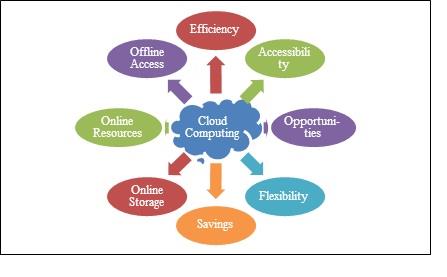Introduction of Cloud Computing
Cloud Computing incorporates virtualization, on-demand deployment; Internet based delivery of services and use of open source software. In contrast to the use of already established concepts, approaches and best practices, Cloud Computing is a novel paradigm that changes the industry viewpoint of inventing, developing, deploying, scaling, updating, maintaining, and paying for applications and the infrastructure on which they are deployed. Due to dynamic nature of cloud computing it is quite easy to increase the capacity of hardware or software, even without investing on purchases of it. From last few years, cloud computing has become a promising business concept. All existing business applications are complicated in nature and much too expensive. To run these applications there is a need of data centers having supporting staff and infrastructure like bandwidth, networks and server etc along with a dedicate team for its execution. For deploying such kind of applications, organizations have to invest large amount of funds which makes it difficult for small businesses to establish themselves. Therefore cloud computing provides a simple alternative to start IT based business organization with much less initial investment. Although cloud computing offers significant edge of the traditional computing methods but the data which is being continuously transferred to cloud is actually Big Data.
Cloud basically stands for Common Location-independent Online Utility service, available on-Demand. It’s a pool of virtualized computer resources which supports large variety of different workloads, including batch-style back-end jobs and interactive, user-facing applications. Cloud computing thus offers computing technologies being offered at cloud. Cloud computing offer lots of advantages over traditional computing such as online resources, offline access, flexibility, savings, just to name a few

Cloud computing includes everything that already exists. It is distributed into three segments namely, applications, platforms and “infrastructure”. Majorly, the definition of cloud computing specifically revolves round the terms like scalability, pay-per use model, and virtualization.
In fact, enablers supporting cloud computing are interoperability, portability, integration of components, ease of deployment, pay as per use, economic, rapid provisioning and elasticity and so on. Because of the appealing features mentioned above, cloud computing is becoming a temptation for all business organizations.
Besides the various features that cloud computing supports, there are few barriers also that are acting as hurdles towards the complete adoption of cloud computing by the business community. For instance, cloud computing architecture (3) is service based architecture i.e. it offers Software as a Service (SaaS), Platform as a Service (PaaS) and Infrastructure as a Service (IaaS). While SaaS allows the consumer to use desired software from the cloud infrastructure, the PaaS provides resources such as operating system and software development frameworks. On the other hand IaaS provides the consumers with processing facility in the form of virtual machines, storage blocks, networking and other fundamental computing resources. Now, each service layer is equipped with certain inherent issues such lack of transparency about storage and security and integrity of data at software as well as platform level. Although IaaS provides basic security such as perimeter firewall, load balancing etc. but applications moving into the cloud actually need higher levels of security from the host.




